Do mountain bikes have soul? Does it need to be earned? Does it need to be retro? Or steel? Chipps delves into a topic with some strong opinions.
Words Chipps Photography as credited
Hey, this feature looks even better when viewed via Pocketmags; you get the full graphic designed layout on your device FOR FREE! It’s not quite as beautiful as the paper magazine but it’s better than a basic webpage.

What began as a light-hearted look at a completely made-up topic quickly turned into some serious debate, both here at the magazine and across the mountain bike world. My original question posed to my friends was ‘‘What is the ‘soul’ of mountain biking? Does the sport have soul, do all bikes have soul, or just steel ones? What about carbon? Or ebikes? Can soul increase? Does it wear out with neglect? Or was ‘soul’ just a fancy affectation invented by soppy writers like Chipps and Ferrentino, back in the ‘golden age’ when bikes and riding were ‘real’?”
We’re already heading deep into the territory of ‘woo’ and ‘completely made up bollocks’; however, I think that for some riders, there is a deeper connection between them and their bikes. They’re more than just playthings, tools, or even transportation; a rider’s relationship with their bike can go deep into the realms of trust, of shared history, obsession and even love. And, like trying to define anything indefinable, there are many ways of expressing our understanding of the concept, as well as the temptation to dismiss it out of hand as just a bit of made-up fairy dust.
Animism – “the belief that objects, places, and creatures all possess a distinct spiritual essence” – has been studied for centuries. If a book or sword or symbol can have magical, otherworldly properties, why not a bike? Why not your bike?
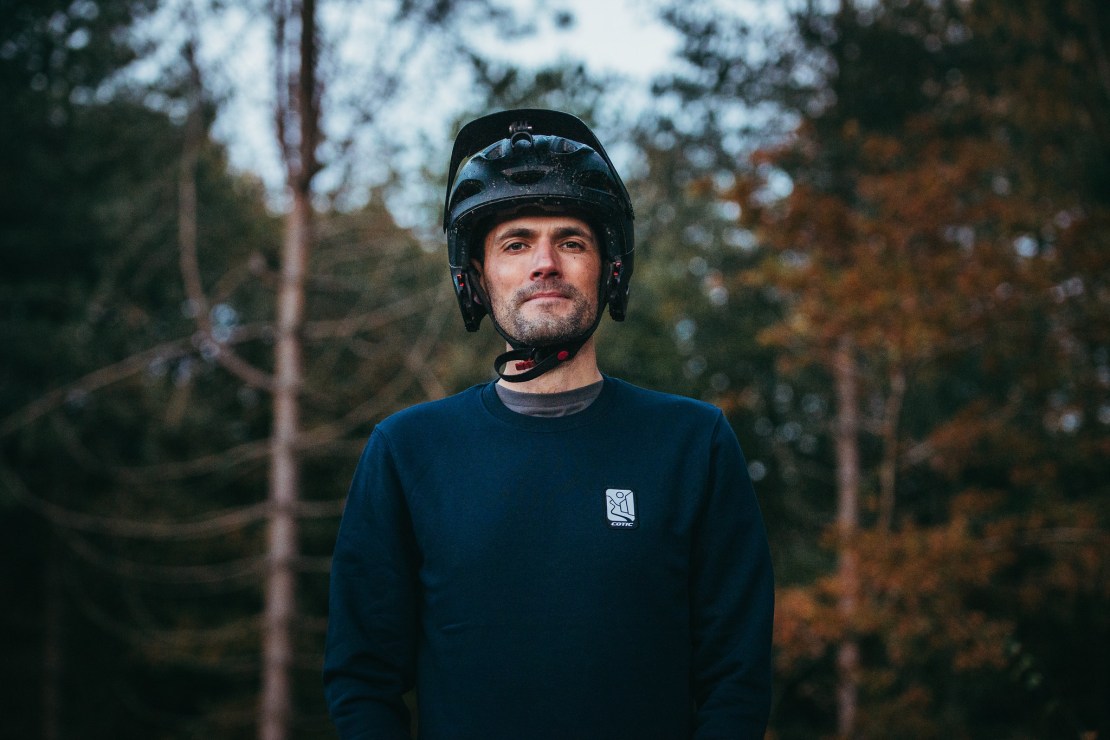
It was inevitable
I knew that my first stop in my search would have to be with the man who literally named his first bike, the ‘Soul’, Cy Turner of Cotic Bikes: “Can bikes have soul? Given our founding product was called the Soul, I think there’s something in it, but I think it’s all about definitions. I think I use the word ‘soul’ for a steel bike, as a parse for the warmth and character of that distinctive steel ride feel. Its softer edges and more welcoming [ride] than stiffer bikes, and that’s always something I’ve loved about the material, and why I (and Cotic) stand against other materials.
“I’m sure others will wax considerably more philosophical about this, and I’m sure people imprint soul onto their bicycle because it’s an intrinsically soulful way to move through the world. You feel connected to nature and the landscape you’re moving through, but due to the speed you travel relative to walking, you notice the changes as they happen. It’s a truly lovely thing to experience, and in that way, I think any bike can be considered soulful if it takes you to that quiet place.”
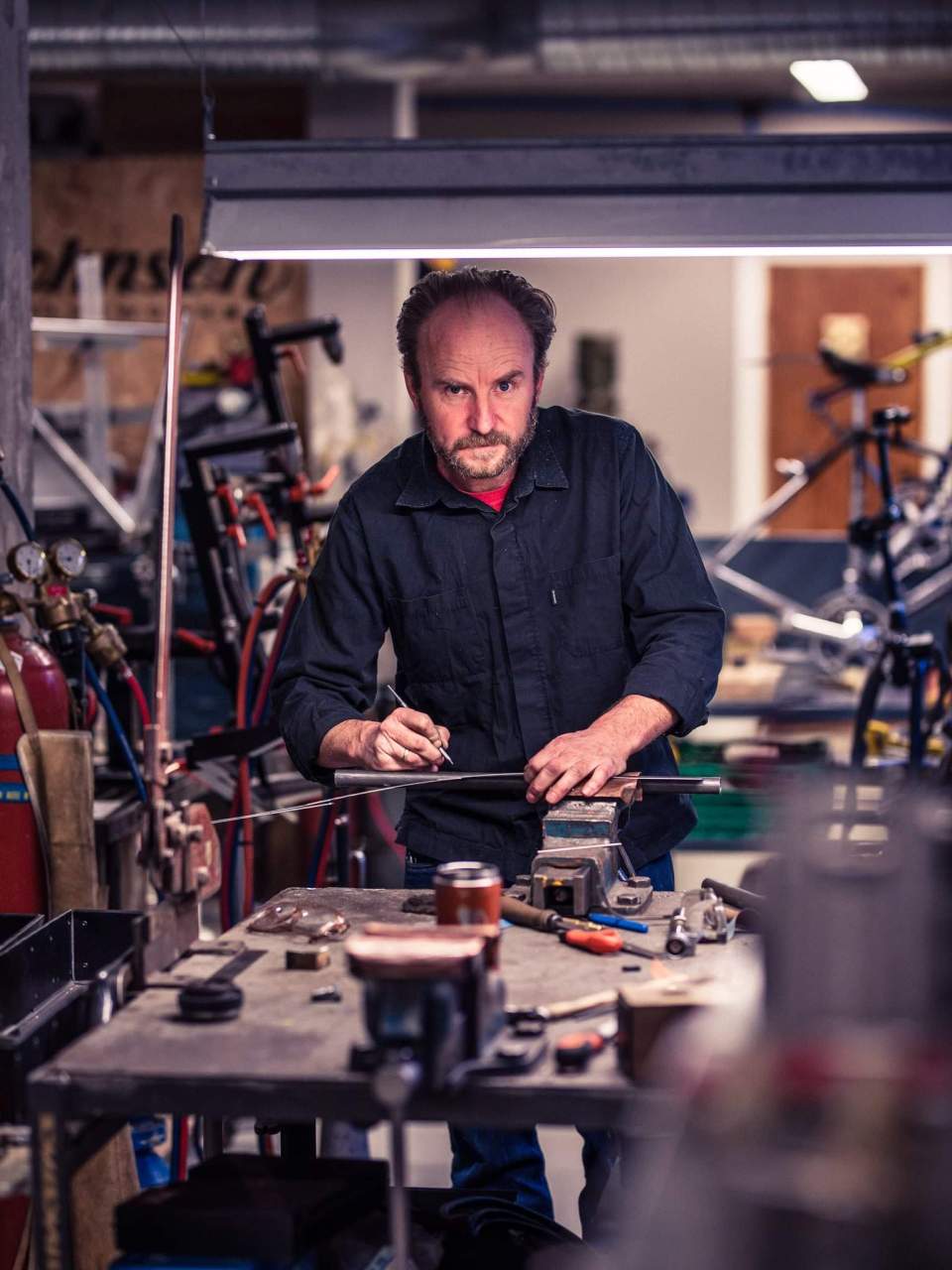
But is it Norwegian?
Of course, Cy would say that, having built his modest empire on that perceived ‘soulful’ ride of a steel bike. I feel that the whole ‘soul’ thing is deeper than just an affection for steel bikes, so I turned to Truls Erik Johnsen – a Norwegian bike journo, anthropologist, philosopher and framebuilder, for some context for that projected spirituality that we give to our humble bike frames.
During our Zoom chat, from his cool, but cluttered workshop, Truls reached above the screen to quickly pull down a dozen different print magazines to illustrate his points: Bike Mag, Surfer, Powder, Rouleur and yes, Singletrack World magazines were stacked high. His theory is that the print (there was no internet) media at the time of that ‘Golden Age’ of 1990s/early 2000s mountain biking was instrumental in shaping the sport and imbuing the early bikes – the Yo Eddy and D.O.G.S.B.O.L.X. frames of the time – with an aura akin to religious relics. Those few authors had an astounding influence that they, we, didn’t realise at the time. If Steve Worland or Ferrentino told us that bikes had soul, then that was the only truth we knew.
Truls: “For those of us who were nerdy enough, that literature shaped how we viewed the sport. That was how we consumed the culture. We had a feeling of being connected to that culture and those objects.” And, vice versa, “You can’t divide us and the objects that surround us. It’s a two-way process. But that’s gone these days because no one puts words to those feelings.”
Truls’ theory is that the early days of mountain biking were dominated by a few powerful voices in a small number of magazines. Writers like Zapata Espinoza, Mike Ferrentino and Steve Worland, or visual artists like Steve Behr, Sterling Lorence and Jo Burt, could dictate how we thought about bikes and builders, racers or cycling meccas. With such a limited monthly drip of information about the sport that many of us had quickly adopted for life, it seemed that those drips were distilled into a concentrate of what mattered most. And because there were no blogs, no IG posts, that news was uncontested, as it might well be the only report you’d ever read about that one bike race in a field in 1991 or one test of a Fisher CR-7 on a French mountain.
Now, though, magazines are fewer still, and there are a million competing distractions calling for our attention online. It seems unthinkable now that a handful of outlets could be the unquestioned source of truth that they once were.
Truls: “We as humans try to find meaning in life. To try to find some kind of goal or purpose in one way or another. To be able to do that, we need to be able to spend time pondering. And we rely on the pondering of others to make sense of our own lives too. That’s the reason we read literature – to experience other people’s emotions. It is grumpy old man speak of course, but it’s a challenge to reflect on why things matter.
“For quite a few of us, a bike matters. It’s what has shaped my life. Apart from kids and wife, it’s THE thing that has shaped me the most, by far.
“Back in the nineties, there were very few of us. We didn’t know about any other riders. We had to pick up information where we could. Every bike was a precious object because resources were limited. We truly loved what we did, and we also loved the object. And when you love an object, you ‘be-soul’ it. Guitars are another example, or fly-fishing rods. You project feelings upon them and they in turn give us abilities due to the trust and relationships we have with them. They have agency, but we need to release that agency.”
This struck a chord with me, as I remembered standing at the top of a technical descent in 1995 or so, unsure of my ability to descend unscathed. It was then I remembered that I knew almost everyone who’d had a hand in my bike. I’d met the welder of the frame, the designer of my forks, the tyre R&D guy and the wheelbuilder. How could I not have confidence? The bike was carrying the spirit and workmanship of all of those creators within it.

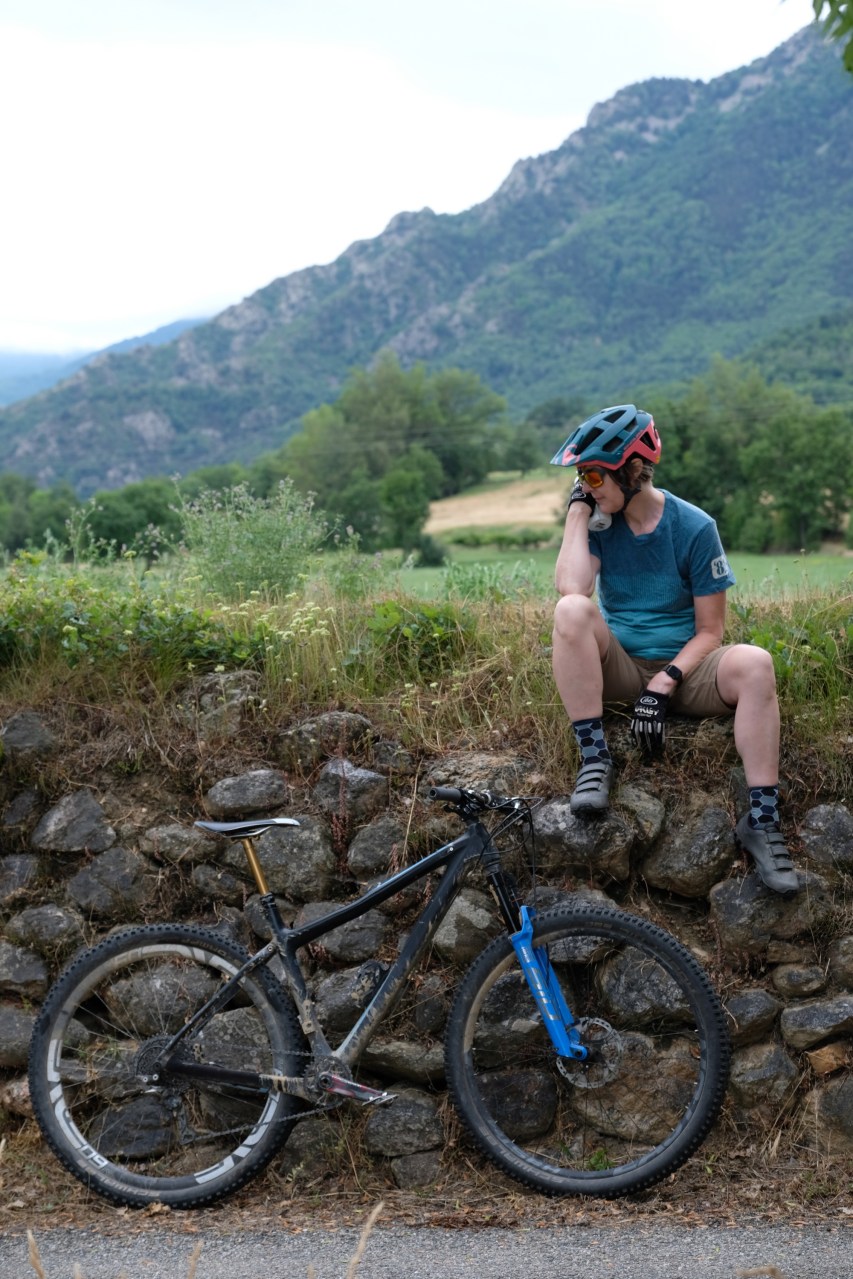
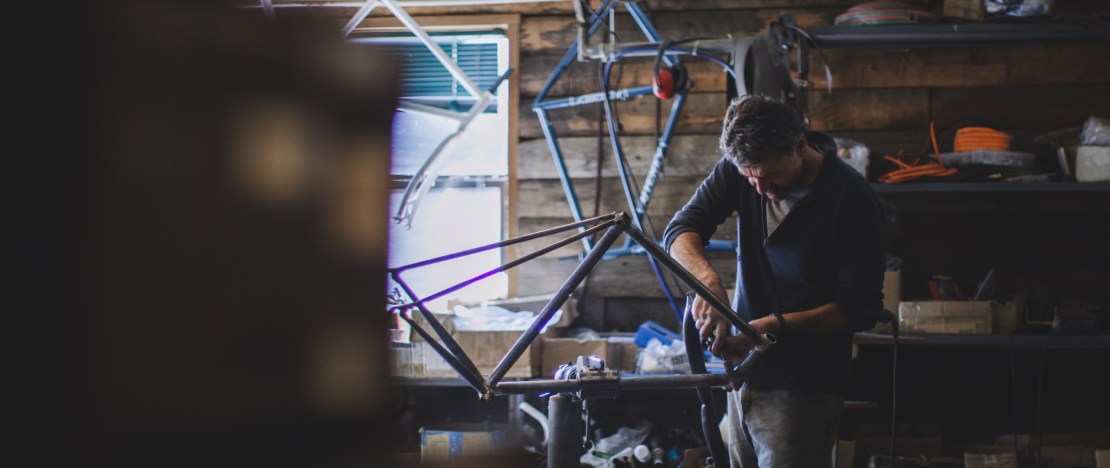
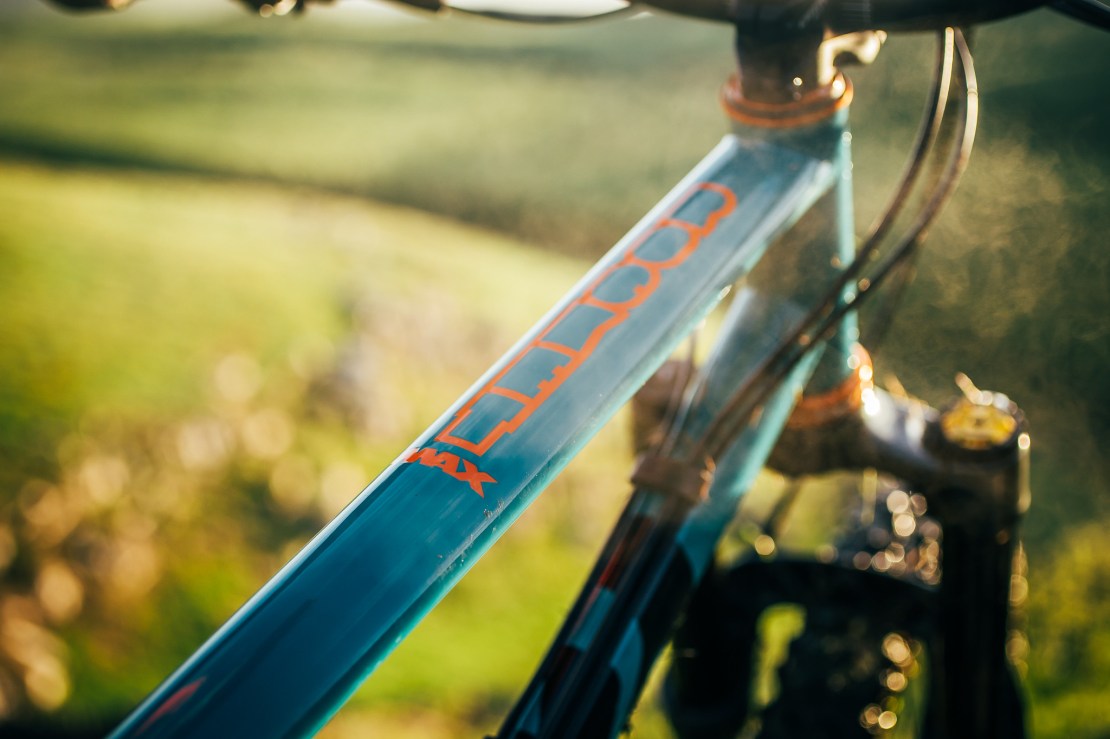
Down with a bump
If ever I’m getting too carried away with a flight of fancy, I turn to legendary American bike journalist Mike Ferrentino. While I will happily lay blame at his feet for anthropomorphising bikes, tools and entire mountain ranges in his writing, he always keeps himself (and me) from getting too carried away.
Mike: “Maybe it’s an age thing, but I don’t think of bikes in terms of soul. They are tools. Some are smashed together in moulds and assembled in vast factories, rolling aggregations of various plastics. Others are cut and mitred and fused together out of one metal or another by a single craftsperson who then carefully selects each component to suit a customer’s specific needs, but in either case, these are tools. They transfer our human effort into motion. Sometimes that effort and motion is simply defined as ‘work’. Other times, other places, it’s ‘play’. In either case, the bicycle is the tool, the instrument, that facilitates that motion. Soul, to my jaded old man way of looking at things, seems like an affectation.
“Take this a step further. People have speculated about the existence of soul ever since we have had the mental capacity to wonder about shit like this. We desperately want our existences to be more meaningful, our identities to be more significant somehow, than this little cosmic blip of awareness that we so briefly inhabit. Are we part of a greater cosmic conscious/unconscious? Does a soul weigh 21 grams? Where is it located exactly? Where does it go when we die? Is it really eternal? What does it do next? What did it do before? Every religion hypothesises at length about all this. We, as a species, love to contend that our souls are what separate us from ‘the animals’, a line of speculation that to me seems pretty dangerous, given our consistent inability to actually define or pinpoint the soul in ourselves, let alone pass judgement on all the other living things on this planet that share immense amounts of DNA code with us.
“But boy, we love to bandy the word around. Paint purple and gold auras all over ourselves to show our enlightenment. Wave it at music and art and mechanical devices in order to imbue them with some deeper meaning. Orate with gravity about its eternal importance so that we can sidestep the awkward acknowledgement of our own insignificance in the face of the infinite.
“If you can’t define soul, somehow separate that word out from The Soul and give it context in a way that can be defined as something other than a music genre, then it’s a messy exercise in semantic vagueness to anoint things as ‘having soul’. Especially tools and toys. Those can be infused with a patina of use. They can take on totemic meaning depending on how and where and when they were employed. There can be significance, meaning, and value – both monetary and sentimental – added to those objects with the passage of time and use. But soul? Nah. That seems like a reach.”
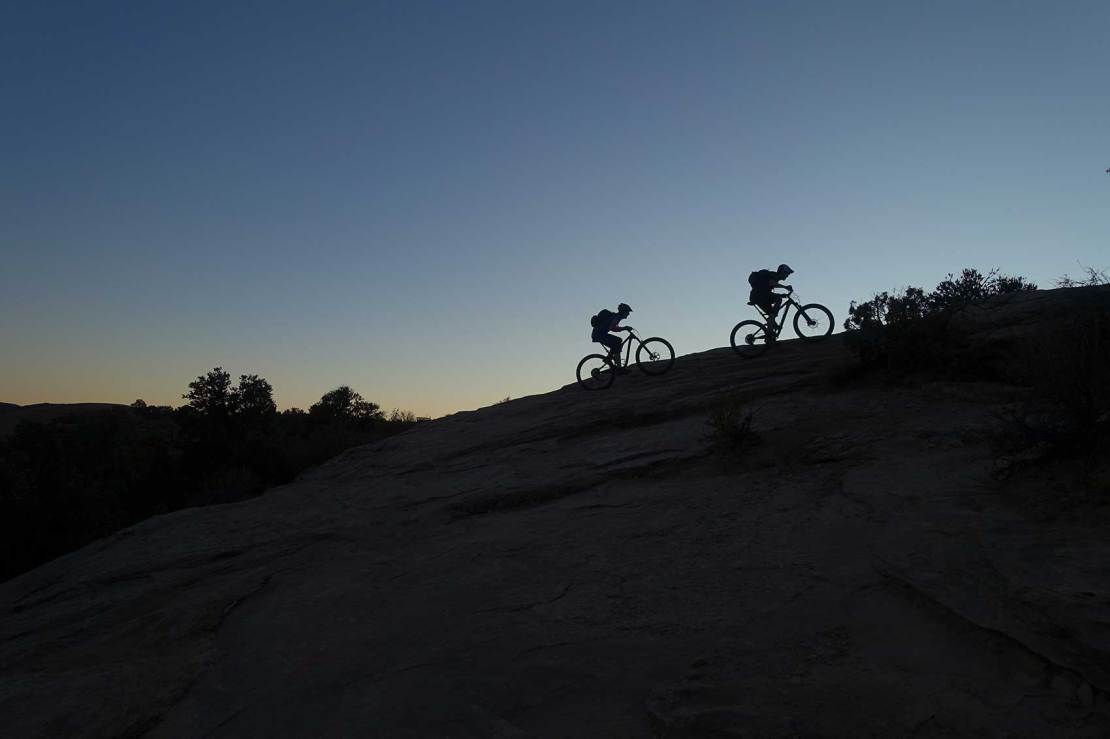
What matters most?
I feel it’s the bike that matters. It doesn’t have to be the best bike, but it does have to be your bike. A bike that you feel a deep connection to will take you places that a shop-floor-freshie never will. But perhaps I’m just still staying too retro. Time to check with another ‘I was there at the start, maaaan’ character of our sport.
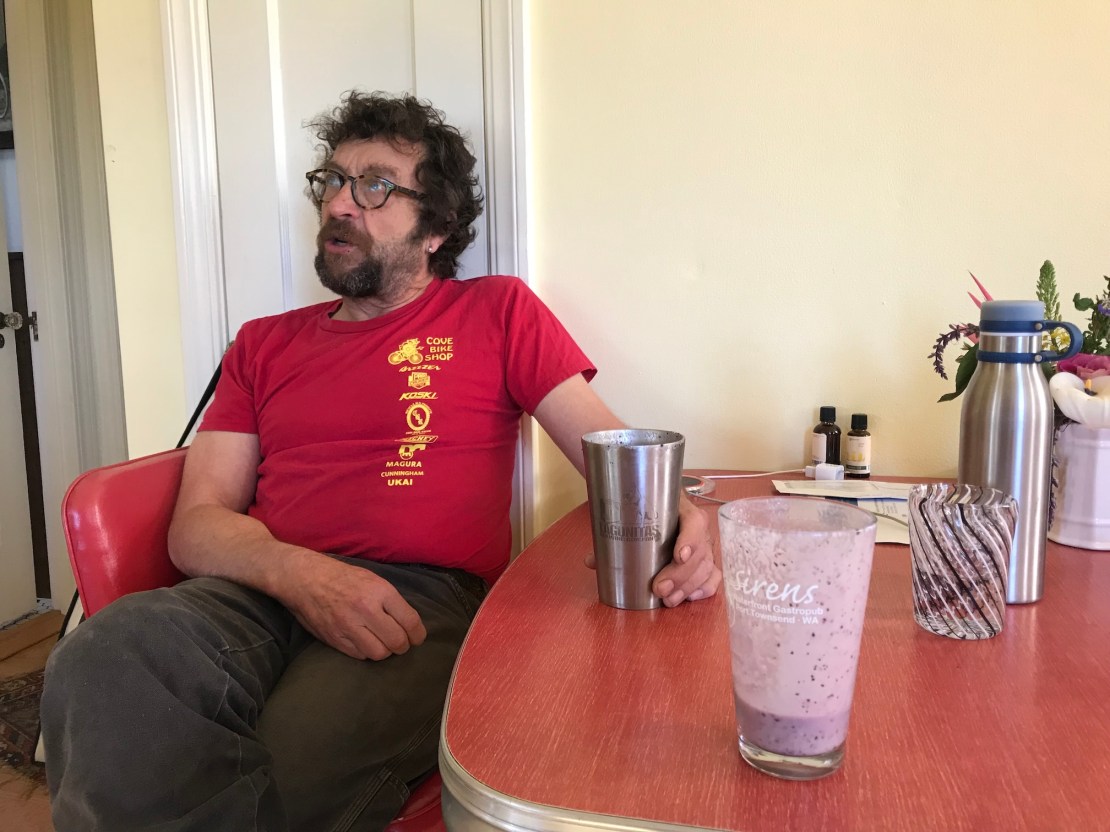
Ross Shafer, founder and framebuilder at California’s Salsa Cycles, still has something to say…
Ross: “Bikes got soul and… they’re super bad! That’s just fact! Powering oneself down the road on foot or with pedals is so human it can’t not have soul!
“The bike industry as a whole is pretty much soul-free these days it seems. Profit, fashion, ever-changing standards, squeaky bikes and the near demise of truly independent, enthusiast-owned bike shops has homogenised the industry into just another consumer dollar-seeking monster. An industry that eats its young.
“On the other hand, you’ve got more small creative (and yes, many are broke) builders who are pumping out the soul like nobody’s business. More truly fine bicycle frame design and building going on now than ever before. I love seeing the level of skill and passion many of these builders possess and share! I’m particularly excited about the growing diversity in my former profession of bicycle framebuilding. Soul infusion for sure, especially if the focus remains on a builder’s output rather than the politics, gender and sexual preference of who produced them. All of the ‘soul’ attributed to bikes and bike riding comes from the humans who bring them to us. There’s a lot of soul to be had by having pride in who we are and letting people get to know what makes us tick, but our products need to speak for themselves first and foremost!
“Oh yeah and take anything an old geezer like me has to say with a grain of salt. You be you!”
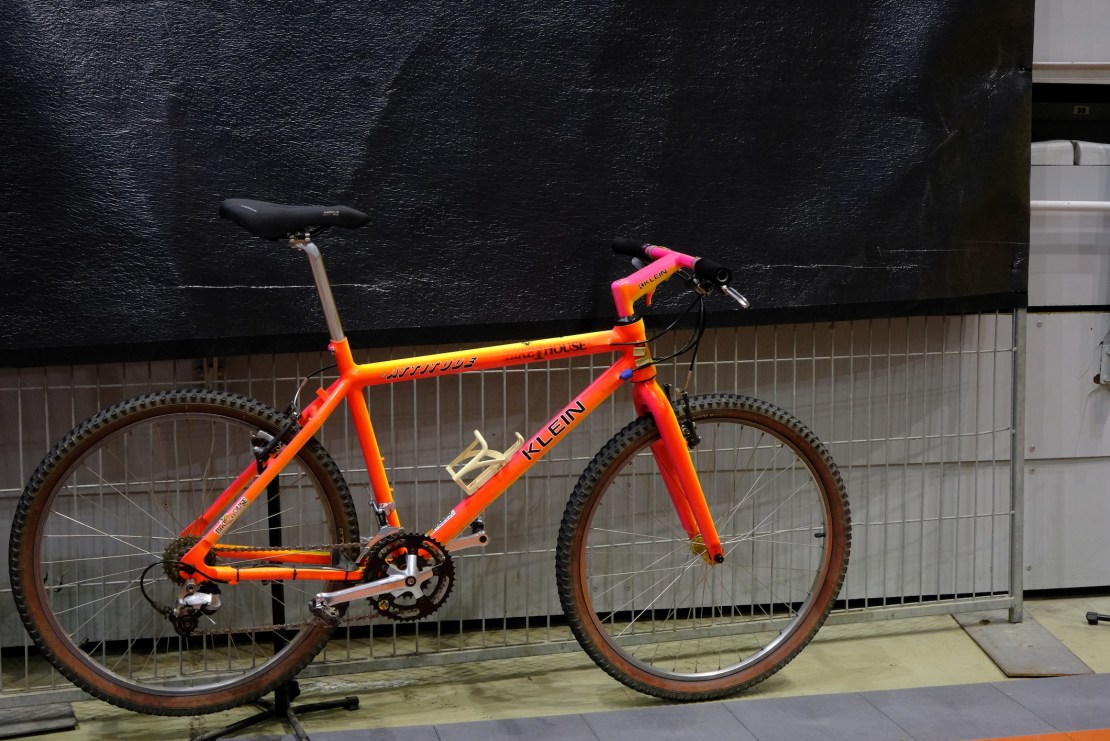
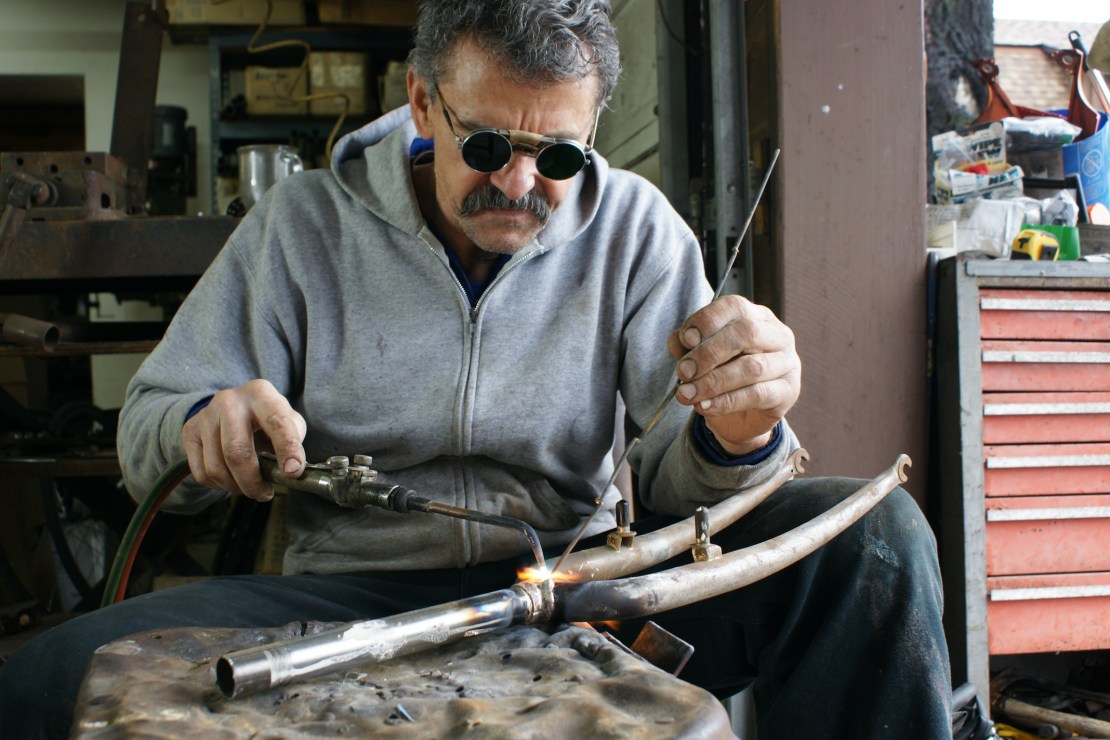
Jeff Lockwood has certainly spent his time preaching soul, both as editor of grit.cx magazine and, later, doing marketing for Ritchey Bicycles (and now Stan’s).
Jeff: “Soul is in the heart of the beholder. Especially when it comes to getting all anthropomorphic about bicycles. I do feel that bikes have a soul. All of them. But how that soul is unlocked, recognised or experienced comes down to the energy and openness of the machine’s pilot.
“As such, I’d like to propose we suspend the idea that handmade steel or titanium bikes crafted by boutique brands or crusty lone-wolf welders have more soul than carbon race rippers belched out by mega-corporations more interested in profits than smiles. Let’s remember that carbon fibre bike-building is a VERY handmade process, and cheap, mass-produced aluminium kids’ bicycles offer youngsters everything we jaded adult cyclists love about riding bikes.
“Think about it. The $175 ‘bicycle’ sold by Walmart will very likely offer some child their first tastes of freedom, boundary-pushing, thrills and adventure. That bike has no less soul, or no more, than my first custom titanium singlespeed mountain bike that I have raced all over the world. Being inherently open to a mutual exchange of energy and experience is where our souls connect.
“On the other hand, the rider who wishes only to own or be seen atop the most expensive, technologically advanced or most bespoke bike is a lot less likely to have the ability to connect with, or recognise, their own soul – let alone engage, and benefit from, the soul of the bicycle they’re riding.
“Not everybody is going to wrap their heads around the concept of soul. Some people are blissfully unaware of it, yet fully immersed, while others simply lack the ability to understand or harness soul. Yes, some riders are always looking for the next perfect bike. But others already know they’re riding it.”

Let’s agree to, oh never mind…
So, there you have it. No one agrees, which is probably how it should be for something so abstract and metaphysical as whether bikes have soul or not.
Are we perhaps conflating the saddle time and familiarity of a well-loved bike with a relationship? Do we look at those scratches and scars (on bike AND body) and see that bike frame and body being damaged, or being work-hardened and forged into a better, stronger self? That first scratch on a new bike will always be traumatic, but you’ll always remember where it happened. And every subsequent scratch adds to the patina of a well-loved bike. Every scuff tells a story of a ride, a crash, or even a klutzy accident, but each one will bond you to a particular bike.
Back when old bikes were new bikes, they had that aura of unattainable artefacts. Is that something that’s lost now with mass production? Or as long as you still have adventures, with whatever bike, will that soul be nurtured?
Truls again: “I think that one can experience the same thing today with new bikes. However, the challenge is that our consumption culture results in one-night stands with bikes. And it’s hard to get a soulful connection with a one-night stand. It’s gone in two or three years, whereas if you’d bought a Ritchey in 1985, you probably kept it until 1997 (or it’s in your cellar still).
“Today, if you ask someone who is truly an avid rider about their trusty steed, there’ll be a similar enthusiasm. If you’ve suffered together with your bike over so many hours and many kilometres, the dinks and dents, you’ll have a connection. If your bike is completely unmodified, you might struggle to feel that connection, but after time, you’ll wear some components in (or out), replace others to better suit you and you’ll get there.
“It requires that we have a language, that we have storytellers, to help us put that into words. I don’t think bike magazine writers should be philosophers, but they should at least be opening [out] the activity in a way that helps us understand it better and to love it more.”
To take something that’s a pastime or a hobby to many people and elevate it to something where you think ‘Wait, this is more than a hobby, this is my life. This defines who I am, what I do, where I live, who my friends are and what I think about’, is a rare thing, and not seen in many sports. Surfing is perhaps the best example.
To someone who’s not ridden a bicycle in their adult life, bikes are toys. They’re what you play with until you grow up and get a car. Those are not people who’ll ever see bikes as having soul. Whereas, a dusty, scratched, half-dead and exhausted but happy rider who’s just had the biggest day on the bike ever, distance-wise, thrills-wise, or just views-wise, will sit back against that dry stone wall outside the pub and stare at the bike that’s kept them enthused and (mostly) upright for the whole big day, and they will stare. And there will be a connection. Do bikes have soul? Does their bike at that moment have soul? They will tell you that it does.
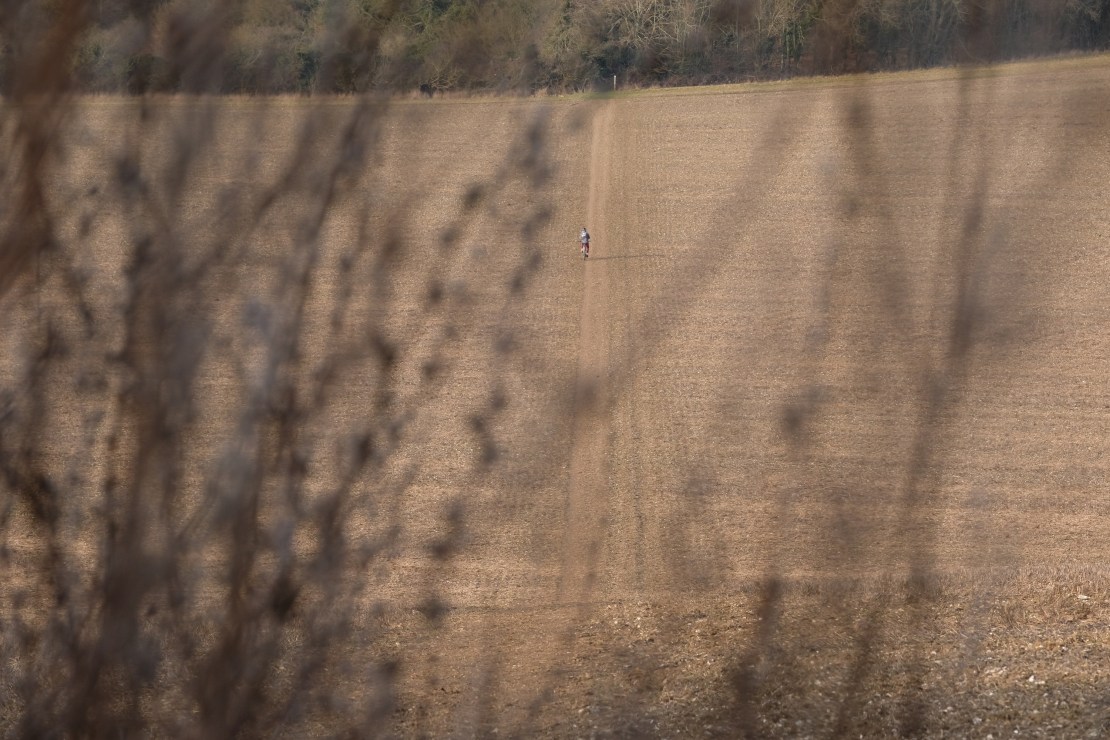


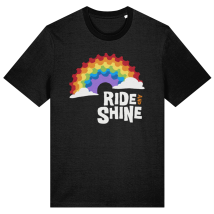


Not IMO no, but the part about bikes and riding ‘defining me’ is 100% true.. a MTBer is who/what i am…. but the actual bike i’m sitting on, meh, as long as it rides nicely, i’m happy 🙂
Flann O’Brien, in The Third Policeman suggests that as you ride a bike more you exchange molecules with the the bike so that you become more like the bike and the bike becomes more like you.
I therefore normally keep my bikes until they fail in a catastrophic way. A new bike needs lots of thinking about.
I enjoyed this article in the mag. Frustratingly I stopped my sub not that long ago (sorry!) as I don’t just really feel like I’m a mountain biker or anything particular in cycling these days, I just love riding a few bikes that I have in various ways and wasn’t picking bike mags up. This was one of those subjects that applies to bikes in general and gets away from all the tech and new kit distraction. Does my bike have ‘Quality’? etc.
Dunno, but I would say prob not half the latest issue being a paid Morzine/Saracen etc promotion
Mike F speaking sense there to me. I’m not really into fetishizing the bicycle – bikes with souls strays into this territory, not for me. ‘Soulful’ bikes also very popular with the more brand-conscious, consumer-minded MTBer ime.
Prefer the Warholian splendour of a giant anthem over anything from builders who claim their bikes are imbued with soul or character.
Na some bikes just feel right and some you never “gel” with.
There wasn’t room for my 2p on this, but I did write it, so here you go:
I’m not sure I’d use the word soul, somehow that feels a bit fusty. It has connotations of organised religion and dusty church floors. Souls are the remnants of dead things. Mountain biking is alive and well, fresh and free. It has essence, not soul. Zip and zing, an openness to the unexpected, and an ability to take it in your stride (or pedal stroke). For me, mountain biking is about places, people, and fun. It can live and evolve, while staying true to an essence of fun and curiosity. You don’t know exactly what the trail ahead holds, or what will happen when you get there, but that’s OK – it’s part of the fun.
Reducing everything to absolutely predictable numbers and results is not mountain biking. Putting bikes and riders in carefully defined boxes and outfits is not mountain biking. The essence of mountain biking is in not knowing what comes next, but always looking forward to whatever it may be. It’s about enjoying others’ interpretation of fun on two wheels, learning new things, and moving forward. That’s not to say we eschew the past – it is there to appreciate and learn from, and perhaps to remind us that fun was had before the tech got fancy.
It’s not about the bike, it’s a state of mind. An attitude that has you wondering what’s over there, and can I get to it on two wheels? Who is that up ahead, and where are they going? Are you coming with me?
An interesting pointless question – although it seems to be several questions in one, does biking (as an activity/ clan) have soul, does a bike have soul etc. My first thought would be well no, that’s a bit silly. But with music you can see/ hear a musician just playing all the right notes in the right way, and yet what they’re lacking still lacks… something. Passion, whatever, the magic.
And with bikes, I’ve only ever ridden hardtails, but they definitely fall into camps of those that have the right dimensions and ride fine but never really do much more (GT, custom Setavento), and those that somehow have an intangible magic that makes them just feel “right" (Kona, Cotic Soda). It’s more than the measurements, it’s something else – probably material choice or whatever. But that’s the immeasurable piece, what you might call soul.
As for MTBing more generally, I guess you could apply ‘soul’ to that moment, where you’re just absolutely in the moment, eyes scanning ahead, bike moving around underneath you, as you flick from berm to berm or off-camber bend to rooty nibble and it all just comes together without really actively “thinking" about it too much. It’s magic
For me that is what I call flow.
For a bike to have soul, I feel like that it has to be an intangible aspect that is transferable with the bike. I have a DeKerf which is the only bike I own that I believe has that. The rest are (mostly) great bikes and I have a long and storied history with them but nobody else would see that and in the end they are just bits of metal and plastic.
I’ve also written about flow too, @colin-T 🙂
Mmm… those Dekerfs were pretty special.
Glad to see the reaction has been around 50/50 great feature/load of rubbish…
Been ruminating on this for a few days now and I’m not really sure. I started that bikes don’t have soul(s), but they do have a character and personality that they might impart on the rider, based on how they ride, head down race pace smashing to cruising along, to playful hopping from root to root etc, but then I think they might have a soul from the wisdom/knowledge/experience the designer/builder has put into them, like the ghosts of bikes past. Seeing a couple of very well respected builders fawning over another (more) respected builder’s frame at the weekend showed me a bit of that frame will probably make its way into others just by existing in the new guys heads.
*currently getting my head around shelving an MTB frame I love but deep down know it, at 435mm reach, is far too small for me (at 6’1”) and there are much more suitable options from one of the aforementioned builders…
glass half empty:
it helps if all of the bikes contact points are in the correct position.
first excursion on a 1990 Raleigh pioneer (ladies!), I simply had to rally it!
if only I could find an mtb with a similar geometry.